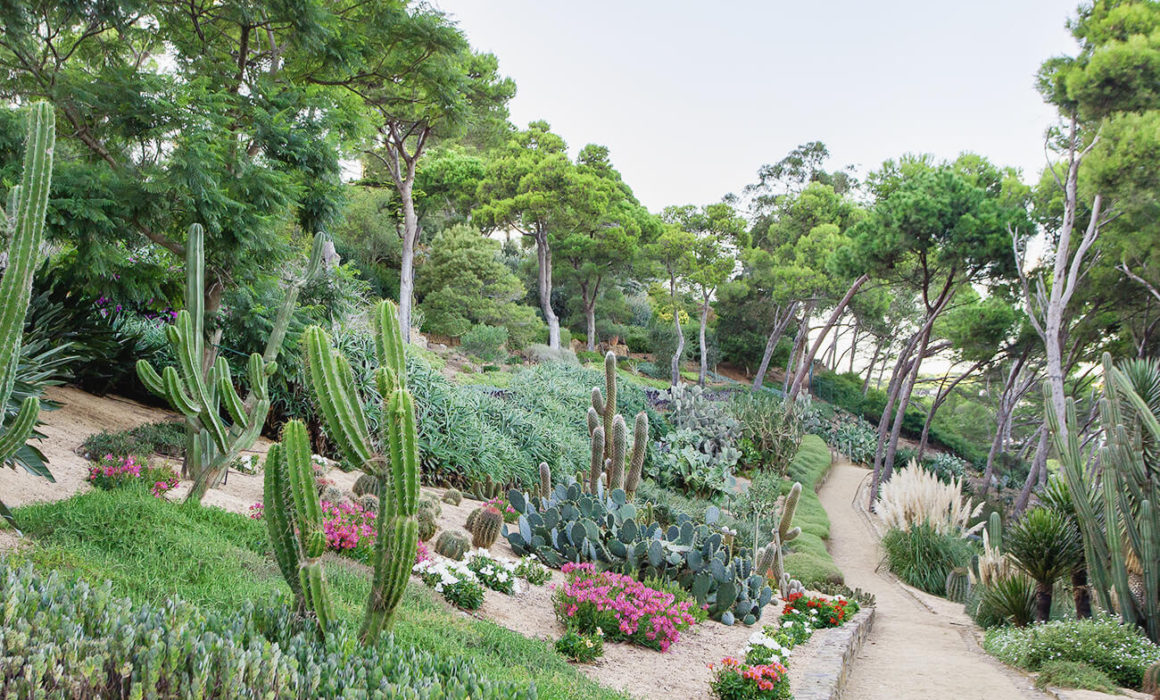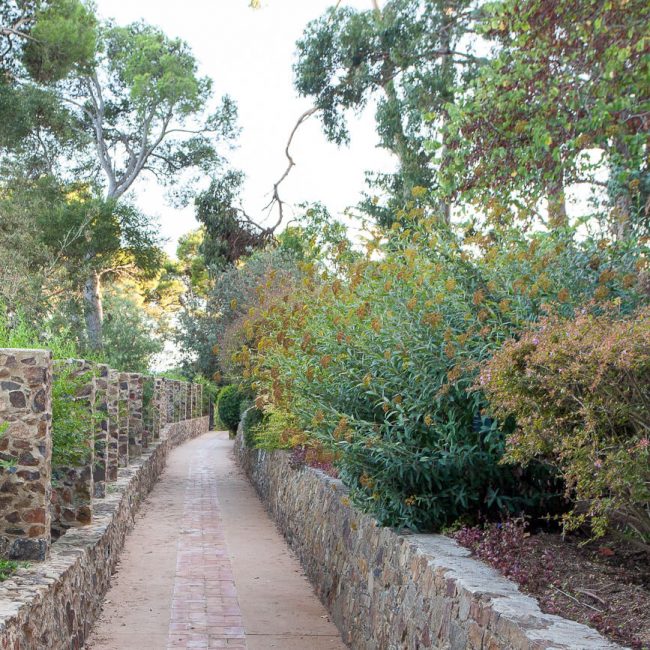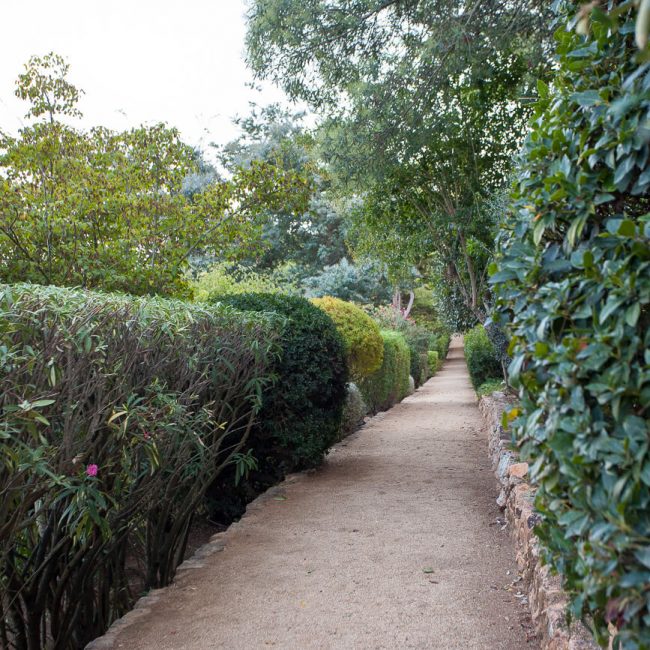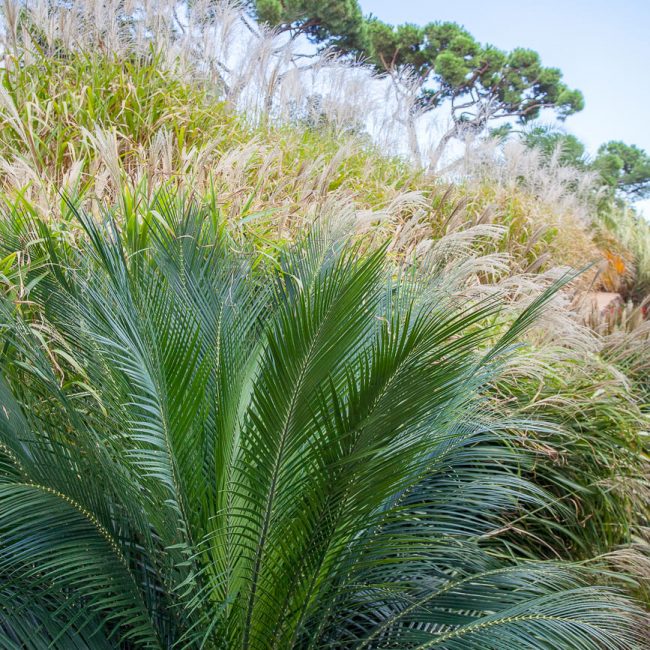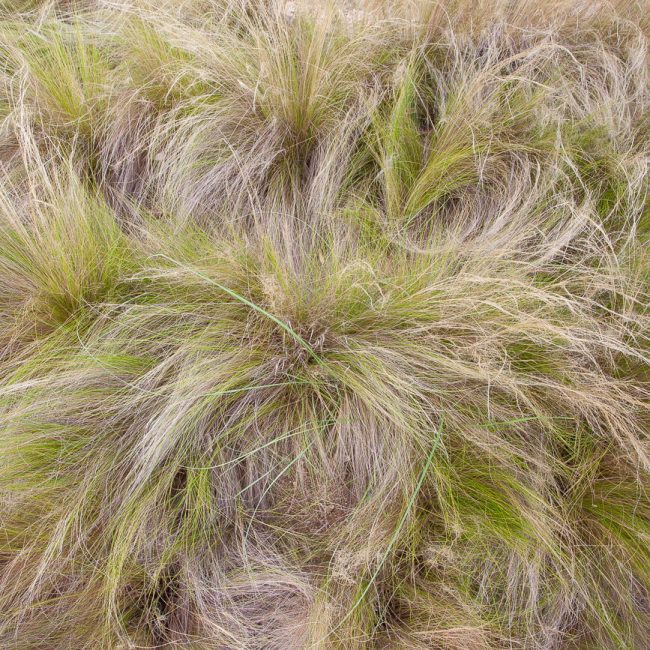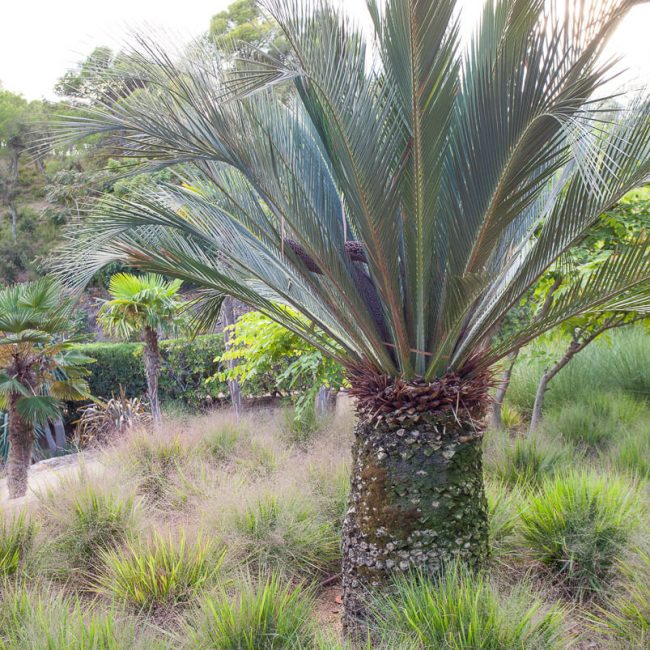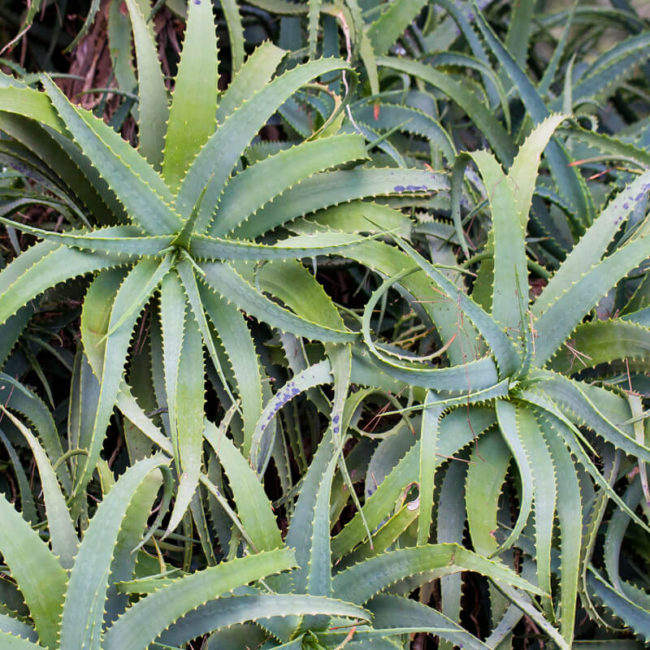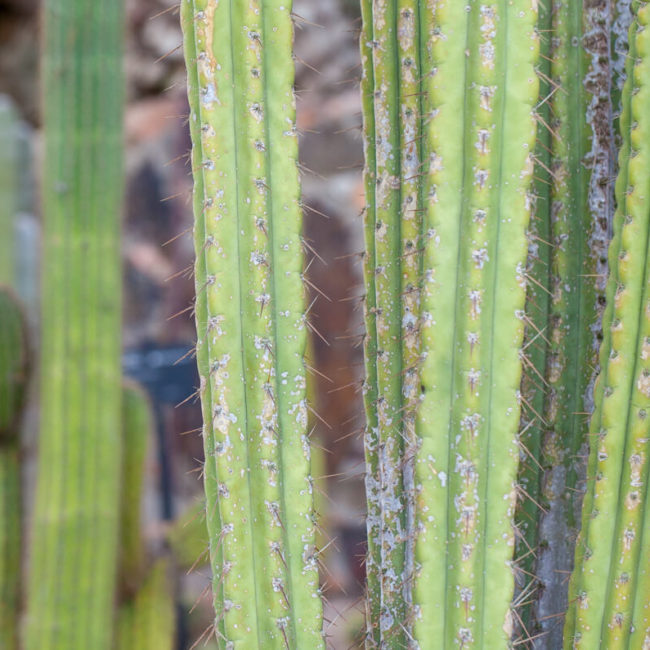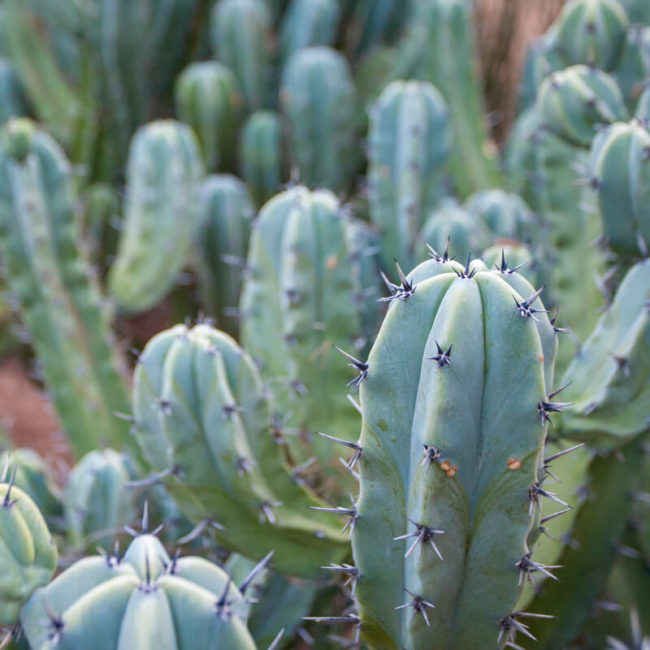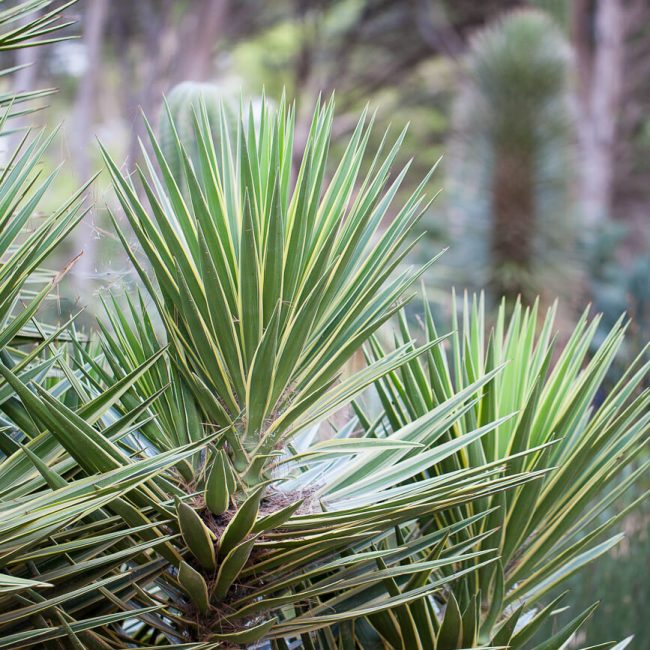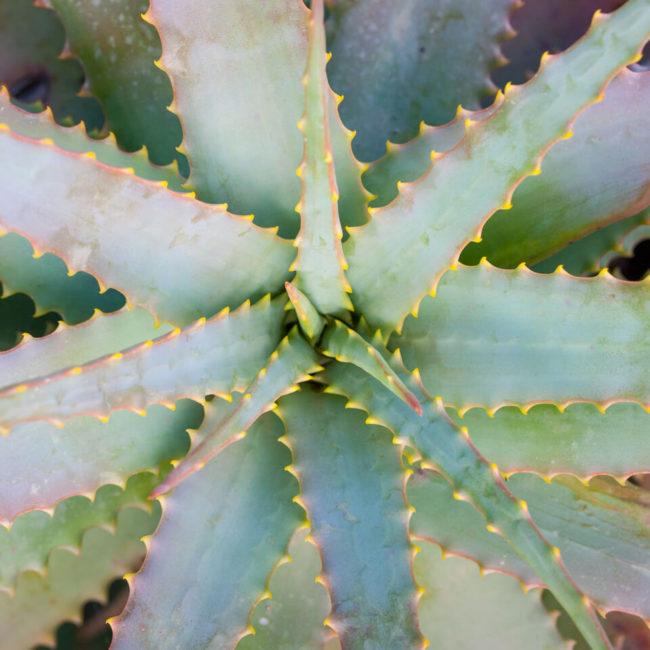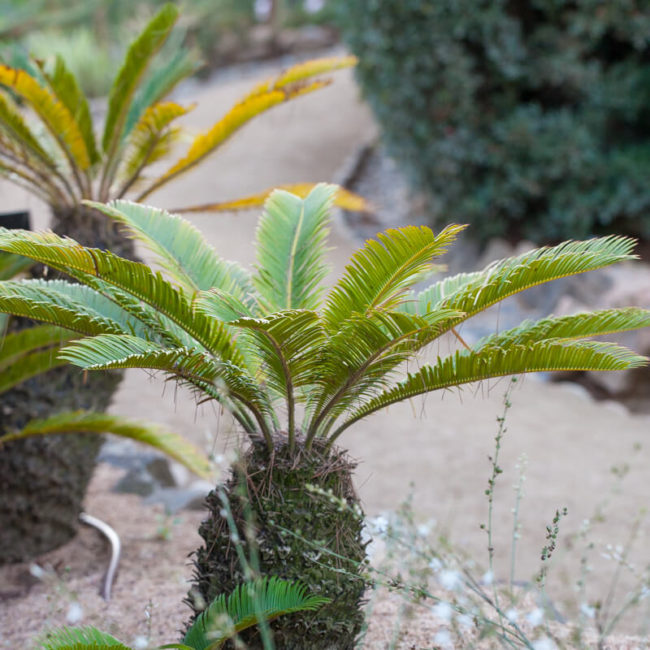Jardins de Cap Roig Offers Stunning Views and Botanical Beauty
Costa Brava, or the wild coast, stretches from Blanes to the French border. Like a saw blade, hundreds of tiny coves and capes mark the rugged coast and each one holds a surprise. I went to the Costa Brava searching for pristine waters, fresh seafood, and coastal trails. But I also found an unexpected botanical treasure: the Jardins de Cap Roig. Perched on cliffs that tower above the Mediterranean Sea, the botanical gardens of Cap Roig will delight garden lovers with exotic plant collections and stunning views.
Located less than three kilometers south of Calella de Palafrugell, the gardens were created in 1927 by tsarist colonel Nicolai Woevodsky and English aristocrat Dorothy Webster. The couple was drawn to Costa Brava’s rugged, unspoiled beauty. Dorothy was a passionate gardener and Nicolai an architect; together, they spent decades creating one of the most beautiful gardens on the Mediterranean Coast. If you’re looking for things to do in Costa Brava, consider a visit to this fantastic botanical garden. Not only do the Jardins de Cap Roig offer botanical beauty, but visitors can also enjoy breathtaking views of the Costa Brava coastline.
Garden of Many Terraces
The 17-hectare garden conforms to the terrain and is built upon narrow terraces that cascade down to the coast. A gentle path zigzags through the terraces and is densely planted on either side. The majority of the garden is confined to the narrow terraces. You can’t go anywhere other than on the path. I felt like I was in a maze; as if there was some destination just ahead but it was hidden out of sight by the pruned hedges.
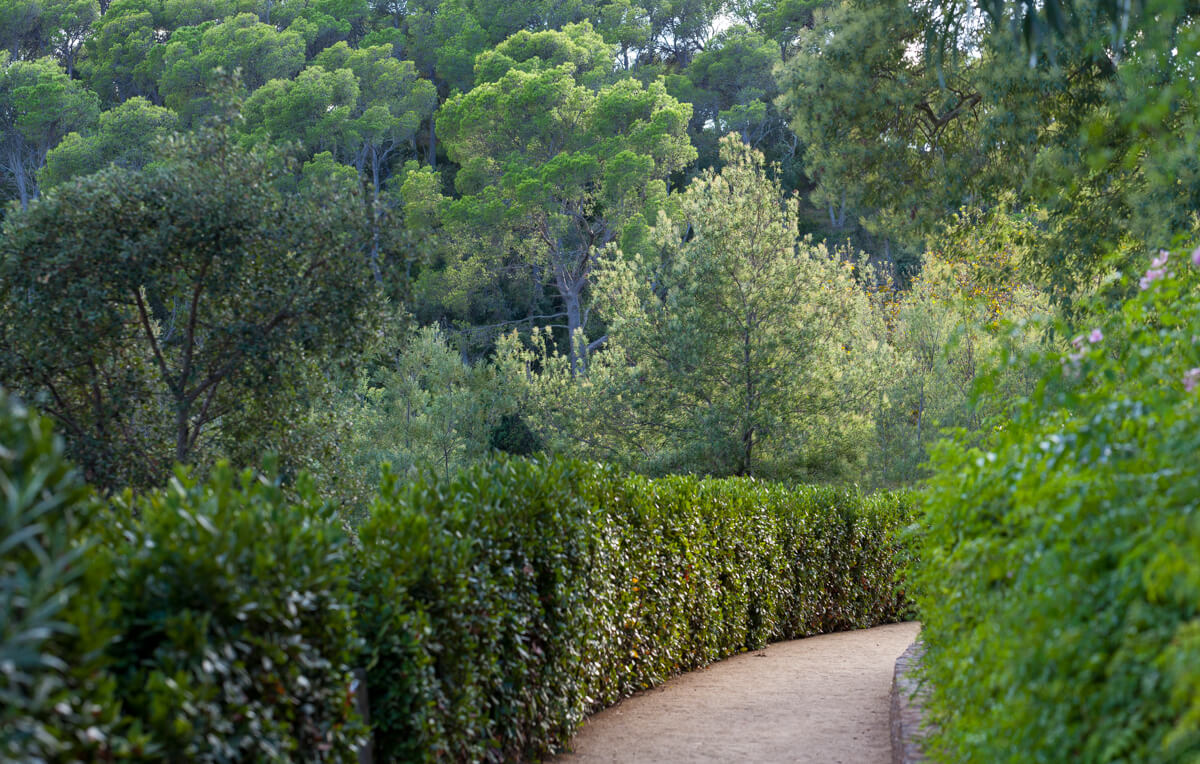
As you walk, the neatly trimmed garden transport you from one botanic world to the next. The Jardin de Cap Roig contains an impressive number of botanical specimens, more than 1,000 grow within the garden. While the garden as a whole is lovely, the palm, geranium, and cactus collections were the stars of the garden.
Palm Tree Garden
Upon entering the Jardins de Cap Roig, one of the first gardens you’ll encounter is the Palm Tree Garden. Here, a diverse array of palms, cycads, and grasses grow. You’ll find Chamaerops humilis cerasifera, Cycas revoluta, and Phoenix roebelenii and my personal favorite, the giant cycad palm (Macrozamia moorei). Unlike most cycads, M. moorei actually forms a massive aerial trunk and can grow up to 30 feet in the wild. Beneath the palms and cycads, soft beds of grasses contrast their structural leaves.
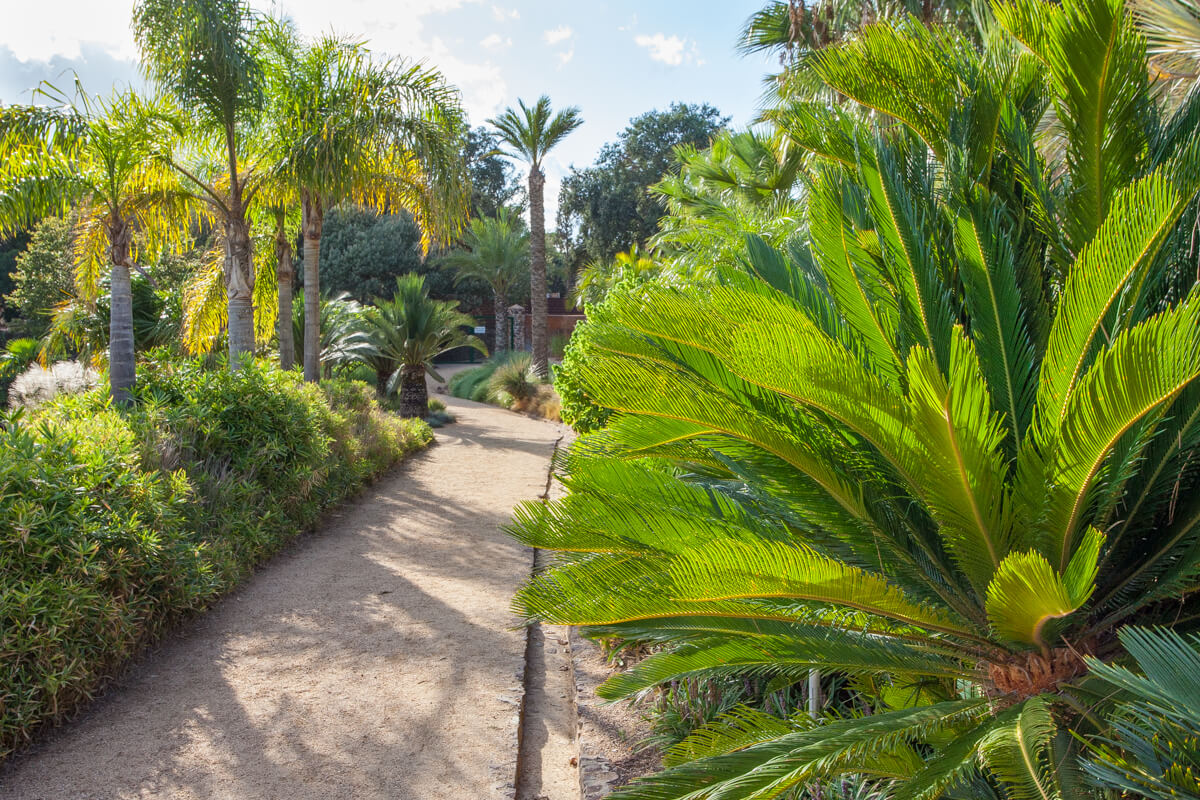
A view from the entrance of the Palm Garden. At sunset, the palms glow an intense chartreuse.

Three Macrozamia moorei with views of the Mediterranean Sea in the distance.
Scented Geranium Terrace
One of the most whimsical gardens at Jardins de Cap Roig is the geranium passage. Thick beds of aromatic Pelargonium line both sides of the path. While few were blooming in late September, their intricate leaves look beautiful when planted en masse. I didn’t miss the flowers much because the best part of the geranium passage is their scent. Gently rub the leaves between your fingers and they’ll give off a delightful aroma. I spent a lot of time trying to discern the subtle scents of the different cultivars. You’ll find common varieties like P. graveolens and P. citriodorum, but also new cultivars like ‘Cola Bottles.’

Only a few of the Pelargonium were blooming in September.
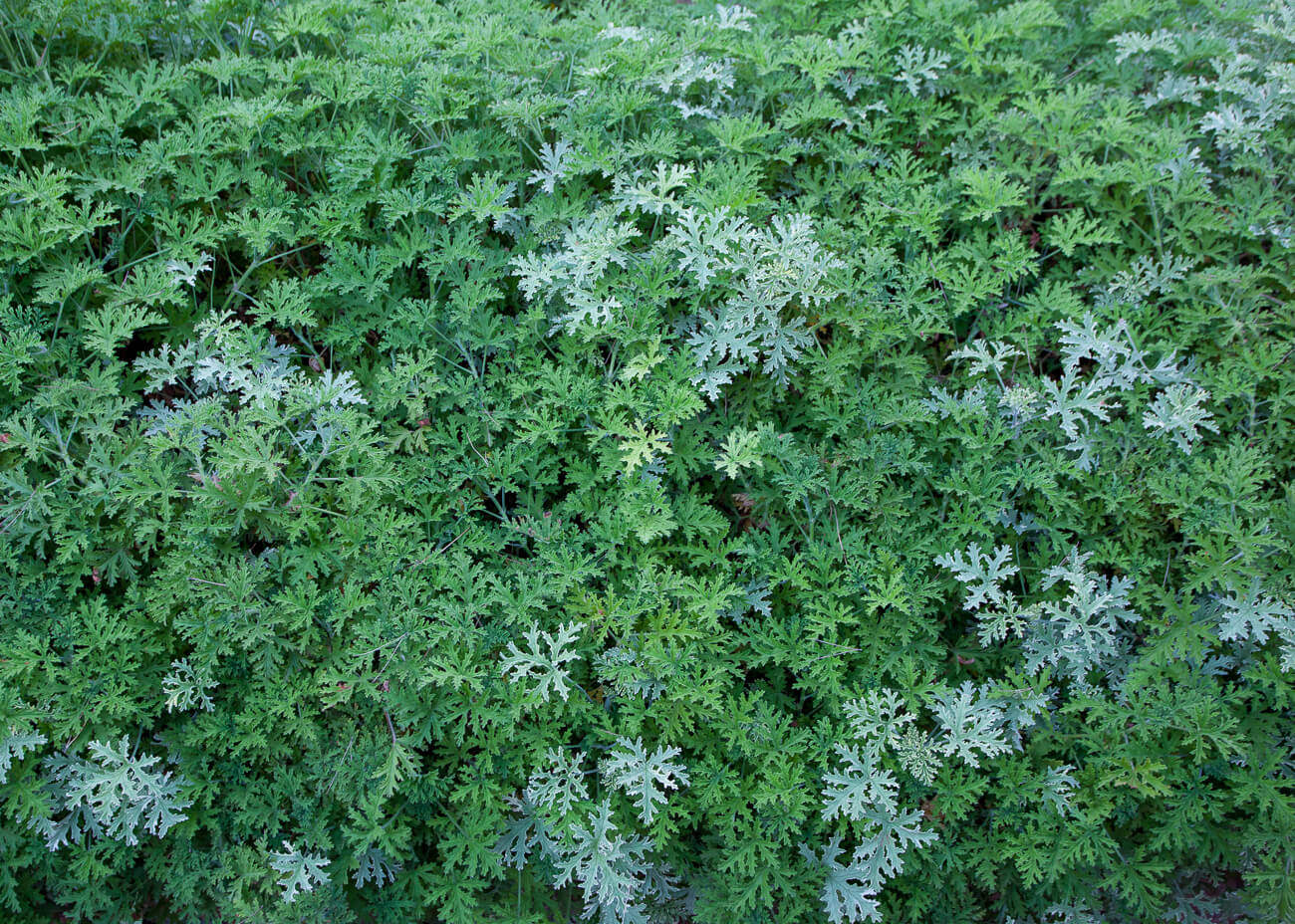
The intricately cut leaves of Pelargonium look fantastic when planted en masse.
As you walk along the geranium passage, you’ll catch views of the large cactus garden below. From this vantage point, you can appreciate the scale of the cactus collection.
Cactus and Succulent Garden
Unlike the other gardens, which are confined to a narrow terrace, the cactus garden covers a large area. It’s easily the most impressive garden at Jardins de Cap Roig and reason alone to visit. The garden dates to 1927, as a result, you’ll see many mature plants, like the giant Yucca elephantipes.
Many of the cacti are planted en masse, which creates a stunning effect. Dark bands of Aeonium arboreum ‘Zwartkopf’ edge sweeping swaths of blue-green Aloe ciliaris. Overhead, tall Pinus pineas sway in the coastal breeze.
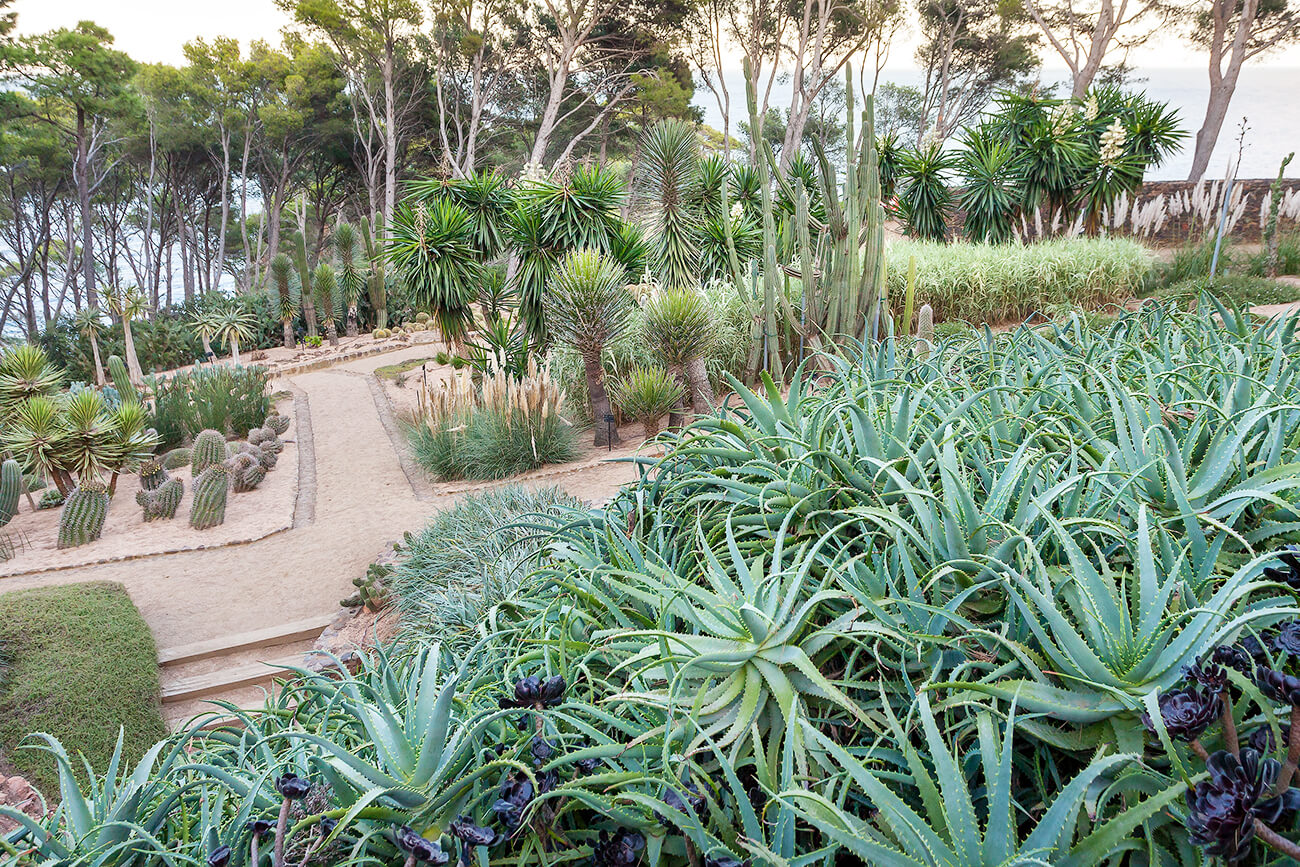
The Cactus Garden is one of the largest at Jardins de Cap Roig. Several terraces separate the plant collections and offer dramatic views of the Mediterranean Sea in the distance.
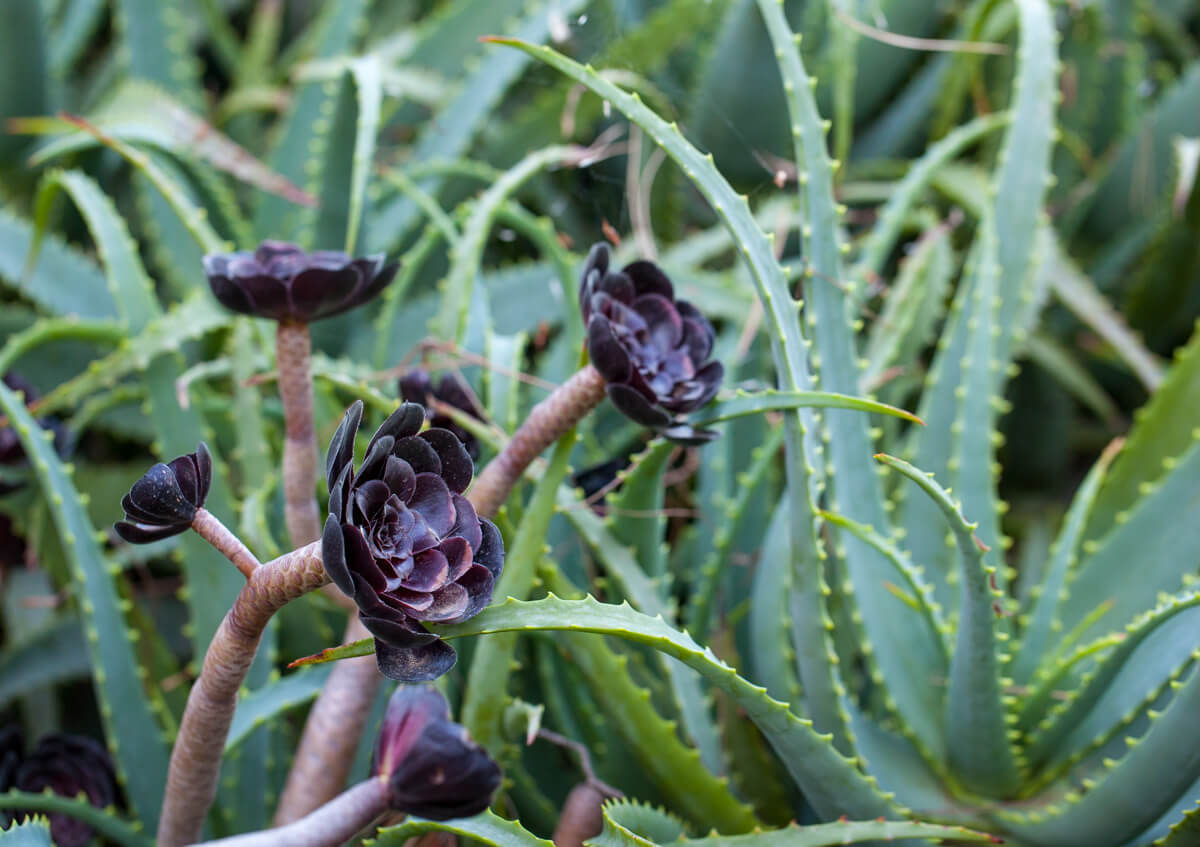
Aeonium arboreum ‘Zwartkopf’ against a backdrop of Aloe ciliaris.
It’s one of the best collections I’ve ever seen and contains a wide variety of cactus, succulents, agave, and aloe. The owners were avid plant collectors and species from across the globe are represented in the garden. Other plants in the collection include Ferocactus horridus, Agave angustifolia, Agave americana, Myrtillocactus geometrizans, and Marginatocereus marginatus.
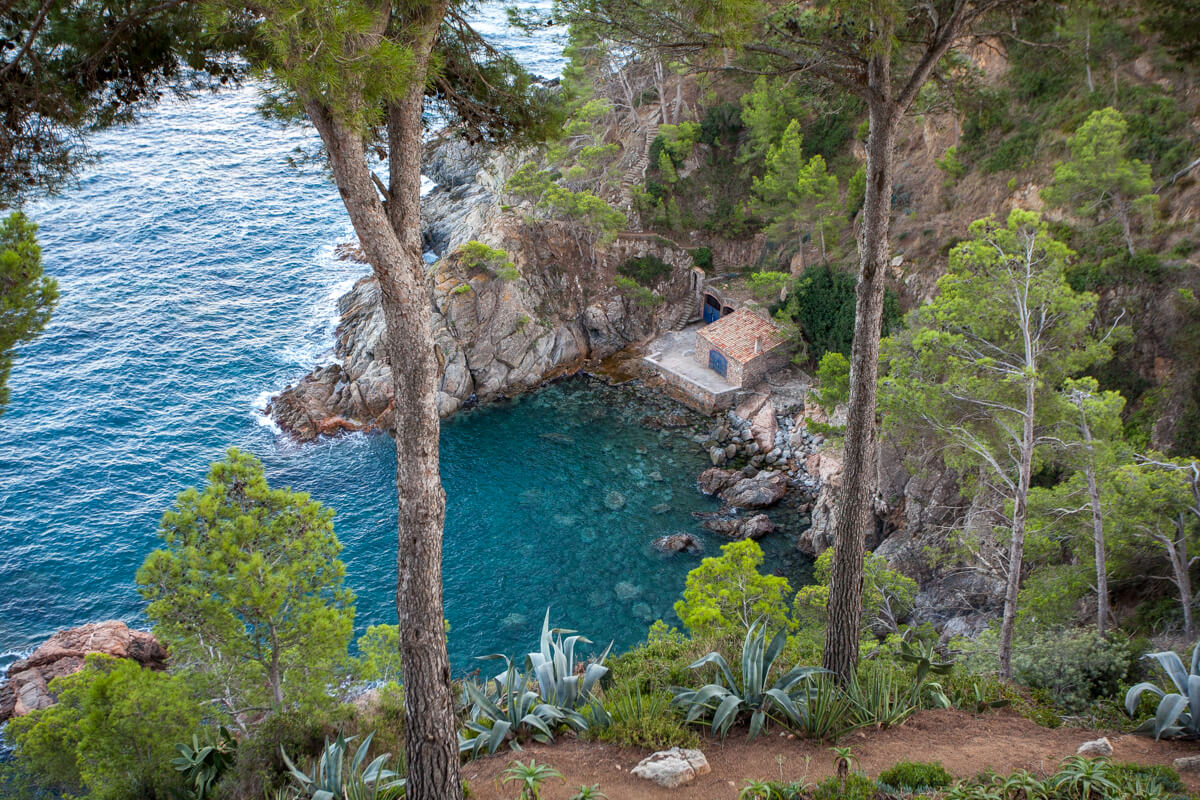
From the south edge of the cactus garden, you can see a small cove below. The colors are amazing; the turquoise waters of the Mediterranean Sea pop against the chartreuse Pinus pinea.
The cactus garden is situated on the lowest terrace and provides stunning views of the Mediterranean Sea. From the garden’s edge, you can see the Formigues Islands.
If you can, try to visit the Jardins de Cap Roig at sunset. The sea glimmers with colorful reflections of the setting sun. The pale pink sunlight baths the garden and highlights the rosy colors within the cactus and succulent flesh.

From the north edge of the garden, you can see the white walls of Calella de Palafrugell.
After you’ve soaked in the garden’s beauty, make your way back to Calella de Palafrugell for dinner. The city has many restaurants that range from casual to fine dining. I enjoyed delicious rounds of tapas and wine at BarK.
In the evening, the white walls of the town glow with the warmth of street lanterns. There are few cars, which makes it easy to meander through the cobblestone streets. Head towards the shore and stroll along the pedestrian boardwalk. It’s the perfect way to end the day, especially with a cone of gelato in hand.

